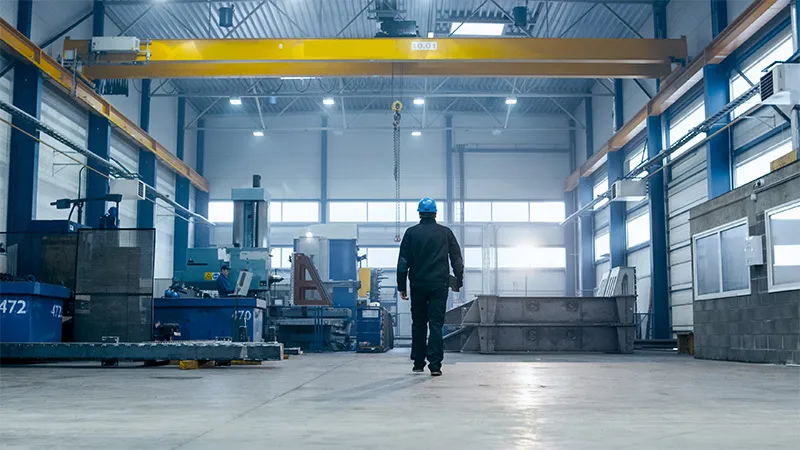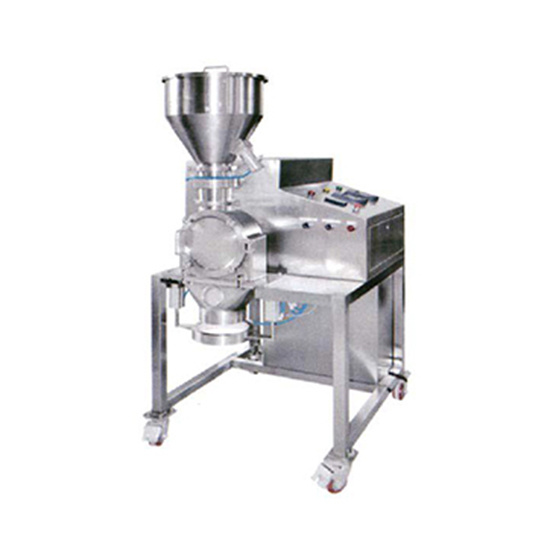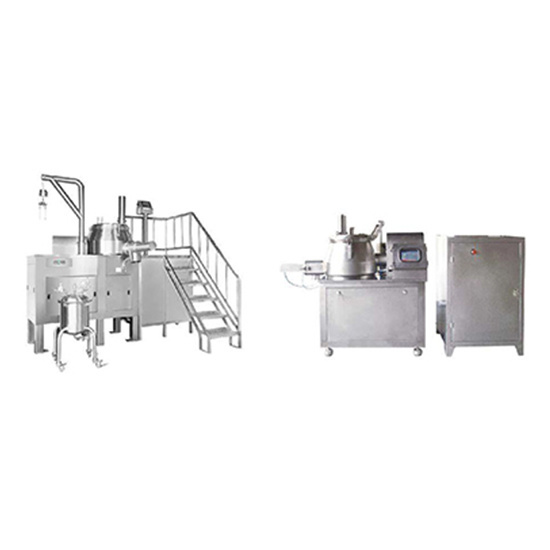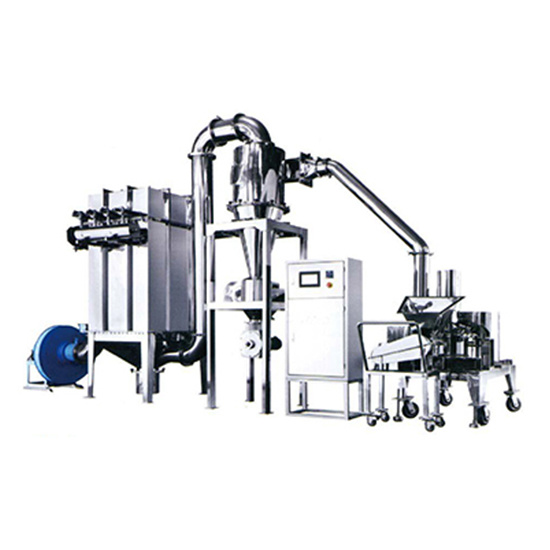NEWS
Unlocking Efficiency: How an Ultrafine Pulverizer Transforms Material Processing
Jul 21,2025
Unlocking Efficiency: How an Ultrafine Pulverizer Transforms Material Processing
Table of Contents
- 1. Introduction to Ultrafine Pulverizers
- 2. What is Ultrafine Pulverization?
- 3. Mechanism of Action of Ultrafine Pulverizers
- 4. Advantages of Using Ultrafine Pulverizers
- 5. Applications Across Various Industries
- 6. Comparison with Traditional Pulverization Methods
- 7. Choosing the Right Ultrafine Pulverizer for Your Needs
- 8. The Future of Ultrafine Pulverization
- 9. FAQs
- 10. Conclusion
1. Introduction to Ultrafine Pulverizers
In today’s fast-paced manufacturing landscape, efficiency is paramount. Companies are continually seeking innovative solutions to enhance productivity and reduce costs. One of the standout solutions in material processing is the ultrafine pulverizer. This advanced machinery not only streamlines the grinding process but also ensures that materials are processed to precise specifications. An ultrafine pulverizer can significantly transform the efficiency of material processing, making it an essential tool in various industries.
2. What is Ultrafine Pulverization?
Ultrafine pulverization refers to the process of grinding materials into extremely fine particles, typically in the range of 1 to 50 microns. This fine particle size is crucial in ensuring that the materials achieve optimal performance in their respective applications. The ultrafine pulverization process enhances the surface area of materials, which can lead to better dissolution rates, improved flow characteristics, and increased reactivity. The technology behind ultrafine pulverizers has evolved over the years, integrating various mechanisms to achieve fine particle sizes efficiently.
3. Mechanism of Action of Ultrafine Pulverizers
The operational efficiency of ultrafine pulverizers lies in their innovative design and mechanism. These machines utilize a combination of mechanical and aerodynamic forces to achieve the desired particle size. The primary mechanisms include:
3.1 Impact and Shear Forces
Ultrafine pulverizers primarily employ impact and shear forces to fracture materials. The materials are subjected to high-speed collisions within the pulverizer, resulting in the breakdown of larger particles into finer ones. The shear forces help in further refining the particles by promoting additional breakage.
3.2 Air Classification
Another critical component of ultrafine pulverization is air classification. This process separates particles based on size by utilizing air streams. After pulverization, an air classifier sifts through the ground material, allowing only the desired particle sizes to pass through while rejecting larger particles for further grinding.
3.3 Advanced Technology Integration
Modern ultrafine pulverizers are equipped with advanced technology, including digital controls and automation systems. These innovations ensure consistent particle size distribution and allow operators to adjust parameters in real-time for optimal performance.
4. Advantages of Using Ultrafine Pulverizers
The adoption of ultrafine pulverizers presents numerous advantages that can significantly enhance operational efficiency:
4.1 Enhanced Product Quality
By achieving finer particle sizes, ultrafine pulverizers contribute to improved product quality. The uniformity of particle size allows for better performance in applications such as pharmaceuticals, food processing, and advanced materials.
4.2 Reduced Waste and Material Loss
Efficient pulverization minimizes material waste, leading to cost savings and improved sustainability. The precise control over particle size reduces the risk of oversizing, which can result in material loss during subsequent processing stages.
4.3 Increased Production Capacity
Ultrafine pulverizers enable higher throughput rates compared to traditional grinding methods. This increase in production capacity can lead to faster turnaround times and improved profitability.
4.4 Energy Efficiency
The energy consumption of ultrafine pulverizers is typically lower than that of conventional grinding equipment. Their efficient design allows for significant energy savings, aligning with the growing emphasis on sustainability in manufacturing.
5. Applications Across Various Industries
Ultrafine pulverizers find applications in a multitude of industries, including:
5.1 Pharmaceutical Industry
In the pharmaceutical sector, the precision of particle size is critical for drug formulation. Ultrafine pulverizers ensure that active pharmaceutical ingredients (APIs) are ground to the desired specifications, enhancing bioavailability and solubility.
5.2 Food Processing Industry
In food processing, ultrafine pulverization is used to create fine powders from spices, herbs, and other ingredients. This process enhances flavor release and improves the texture of food products.
5.3 Material Manufacturing
Manufacturers of advanced materials utilize ultrafine pulverizers to create composites and specialized coatings. The fine particle sizes are essential for achieving the desired physical properties of these materials.
5.4 Chemical Industry
In the chemical industry, ultrafine pulverizers contribute to the production of fine chemicals, pigments, and other specialty products. The ability to control particle size enhances the performance of these materials in various applications.
6. Comparison with Traditional Pulverization Methods
When comparing ultrafine pulverizers with traditional pulverization methods, several key differences emerge:
6.1 Particle Size Control
Ultrafine pulverizers provide superior control over particle size distribution compared to conventional grinding methods. This precise control is essential in industries where specific particle sizes are critical for product performance.
6.2 Operational Efficiency
Traditional pulverizers often require multiple processing stages to achieve fine particle sizes, resulting in increased energy consumption and longer processing times. In contrast, ultrafine pulverizers streamline the process, enhancing overall efficiency.
6.3 Maintenance and Downtime
Ultrafine pulverizers are designed for reliability, often requiring less maintenance than traditional machines. This reliability leads to reduced downtime and increased productivity.
7. Choosing the Right Ultrafine Pulverizer for Your Needs
Selecting the ideal ultrafine pulverizer involves considering several factors:
7.1 Material Characteristics
Understanding the properties of the material to be processed is crucial. Factors such as hardness, moisture content, and specific gravity can influence the choice of pulverizer.
7.2 Desired Particle Size
Identify the target particle size for your application. Different ultrafine pulverizers are optimized for various size ranges, so it is essential to choose one that meets your specifications.
7.3 Production Capacity
Consider your production requirements. Evaluate the throughput capabilities of the pulverizer to ensure it aligns with your operational demands.
7.4 Budget and Cost of Ownership
Assess your budget and consider the total cost of ownership, including maintenance, energy consumption, and operational efficiency. Investing in a high-quality ultrafine pulverizer can yield long-term savings.
8. The Future of Ultrafine Pulverization
The future of ultrafine pulverization is bright, with ongoing advancements in technology and materials science. Innovations such as smart sensors, AI-driven optimization, and eco-friendly designs are set to enhance the performance of ultrafine pulverizers further. As industries continue to prioritize efficiency and sustainability, the role of ultrafine pulverizers will become increasingly critical in meeting these demands.
9. FAQs
1. What materials can be processed using ultrafine pulverizers?
Ultrafine pulverizers can process a wide range of materials, including metals, polymers, pharmaceuticals, and food ingredients. The choice of pulverizer may depend on the material characteristics.
2. How does an ultrafine pulverizer differ from a traditional grinder?
Ultrafine pulverizers achieve much finer particle sizes through advanced mechanisms of impact and air classification, while traditional grinders may require multiple stages to reach similar fineness.
3. What industries benefit most from ultrafine pulverizers?
Industries such as pharmaceuticals, food processing, chemicals, and material manufacturing see significant benefits from ultrafine pulverizers due to their need for precise particle size control.
4. Are ultrafine pulverizers energy-efficient?
Yes, ultrafine pulverizers are designed to minimize energy consumption while maximizing output, making them a more energy-efficient option compared to traditional grinding methods.
5. How can I determine the right ultrafine pulverizer for my needs?
Consider factors such as material characteristics, desired particle size, production capacity, and budget. Consulting with a supplier can help you select the most suitable equipment.
10. Conclusion
In summary, ultrafine pulverizers play a pivotal role in transforming material processing across various industries. Their ability to produce finely sized particles efficiently and reliably enhances product quality while reducing waste and operational costs. As we move toward a more efficiency-driven future, the importance of ultrafine pulverizers will continue to grow, making them an indispensable asset in modern manufacturing. By understanding their mechanisms, advantages, and applications, businesses can unlock the full potential of ultrafine pulverization and stay competitive in the evolving marketplace.
More News










